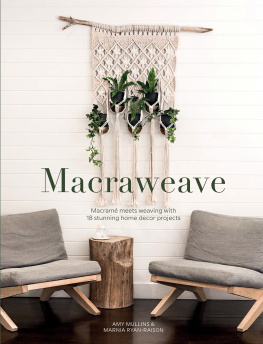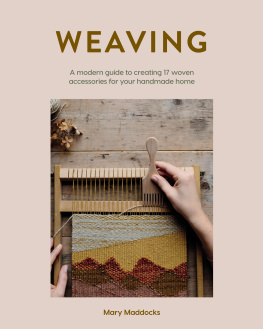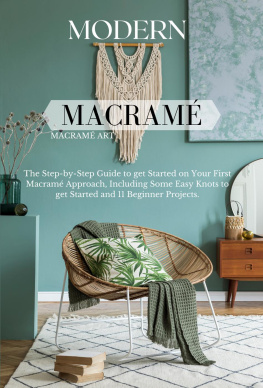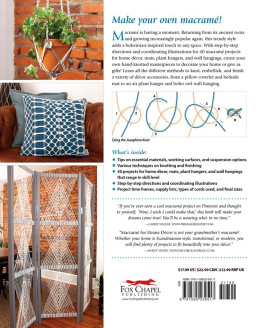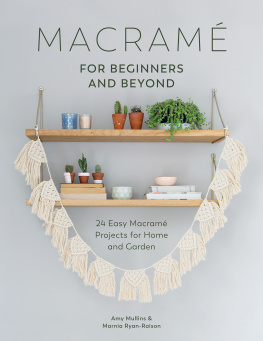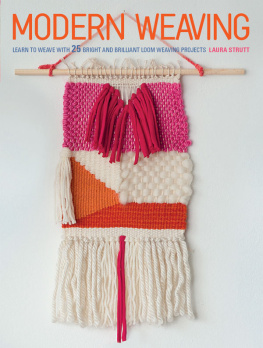Contents
Guide
Macraweave
Macram meets weaving with
18 stunning home decor projects
AMY MULLINS &
MARNIA RYAN-RAISON

www.davidandcharles.com
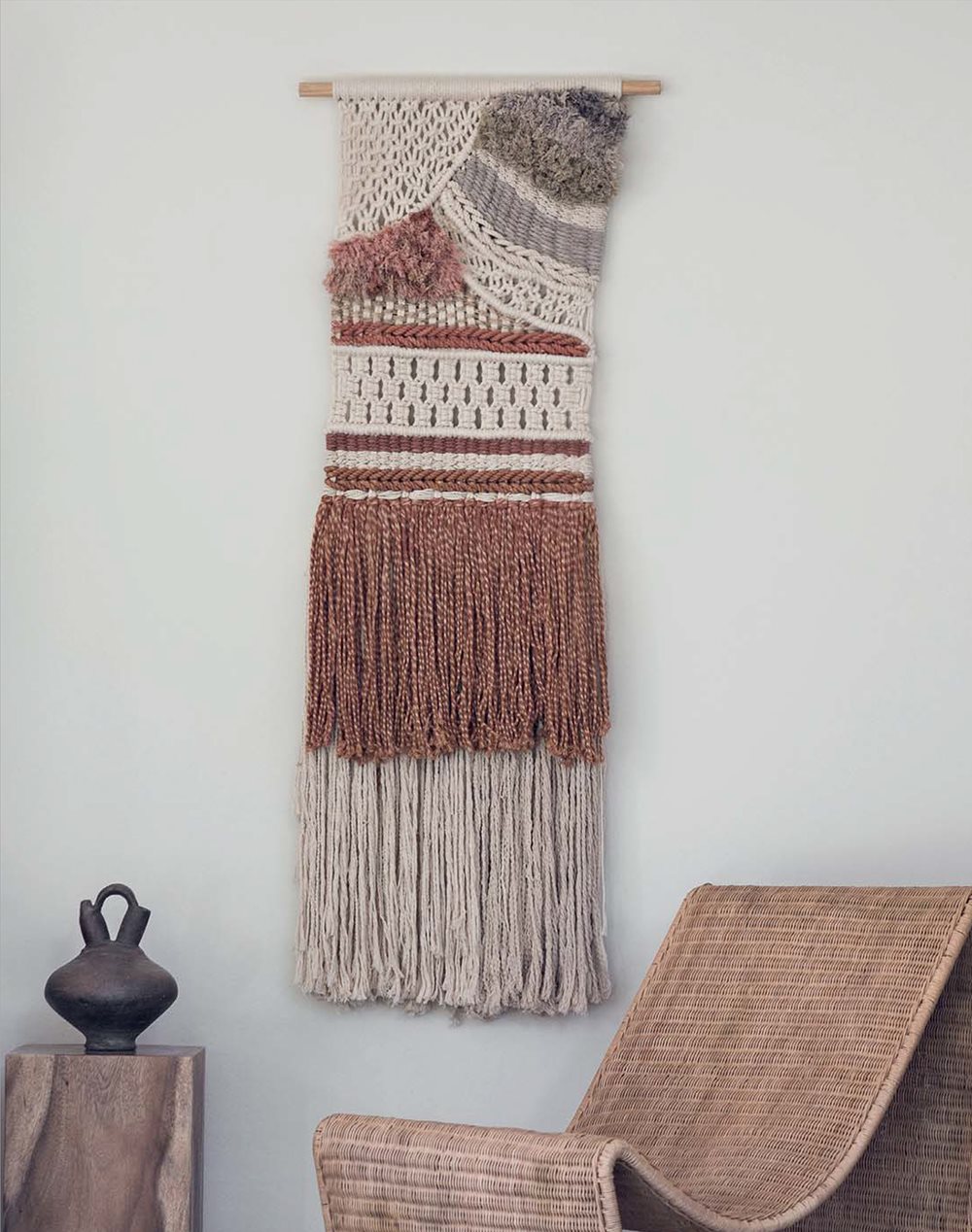
Contents
Introduction
This book is your must-have guide to macraweaving, the exciting new craft that brings together two timelessly popular fibre arts, macram and weaving. By combining the essential knots of macram with three of the most fundamental weaving techniques, you will discover how simple it can be to work with texture and colour to make beautiful, eye-catching pieces for your home.
Whether you are looking to learn a fresh skill, or to take your macram to a whole new level, youll find everything you need right here. Weve put together an enticing selection of eighteen projects for you to choose from to satisfy all your creative ambitions, whether you are searching for functionality or for an artistic feature to transform a room.
Every project, be it our simple starter Keeper Key Rings to our phenomenal Pride and Joy Wall Hanging, is explained in clear step-by-step detail. We begin with the macram element for each, as this must be done first to create a structure of negative spaces, or warp threads, through which the weft threads are woven in the weaving element.
In devising our designs, we have aimed to introduce you to a wide variety of decorative possibilities, using an assortment of rope in different fibres and thicknesses, exploring rich colourways and interesting textural techniques.
Youll find more information on the materials we have used in the Techniques section, along with essential illustrated reference on the knots and the weaves, as well as a comprehensive guide to understanding the macraweave technique, which we suggest you practise in full before beginning your first project. Each project chapter lists the materials you will need and the techniques required, so you can review the tying and weaving sequences as you go; follow these precisely and you will find that even the most complex of designs is easier to achieve than you may have expected.
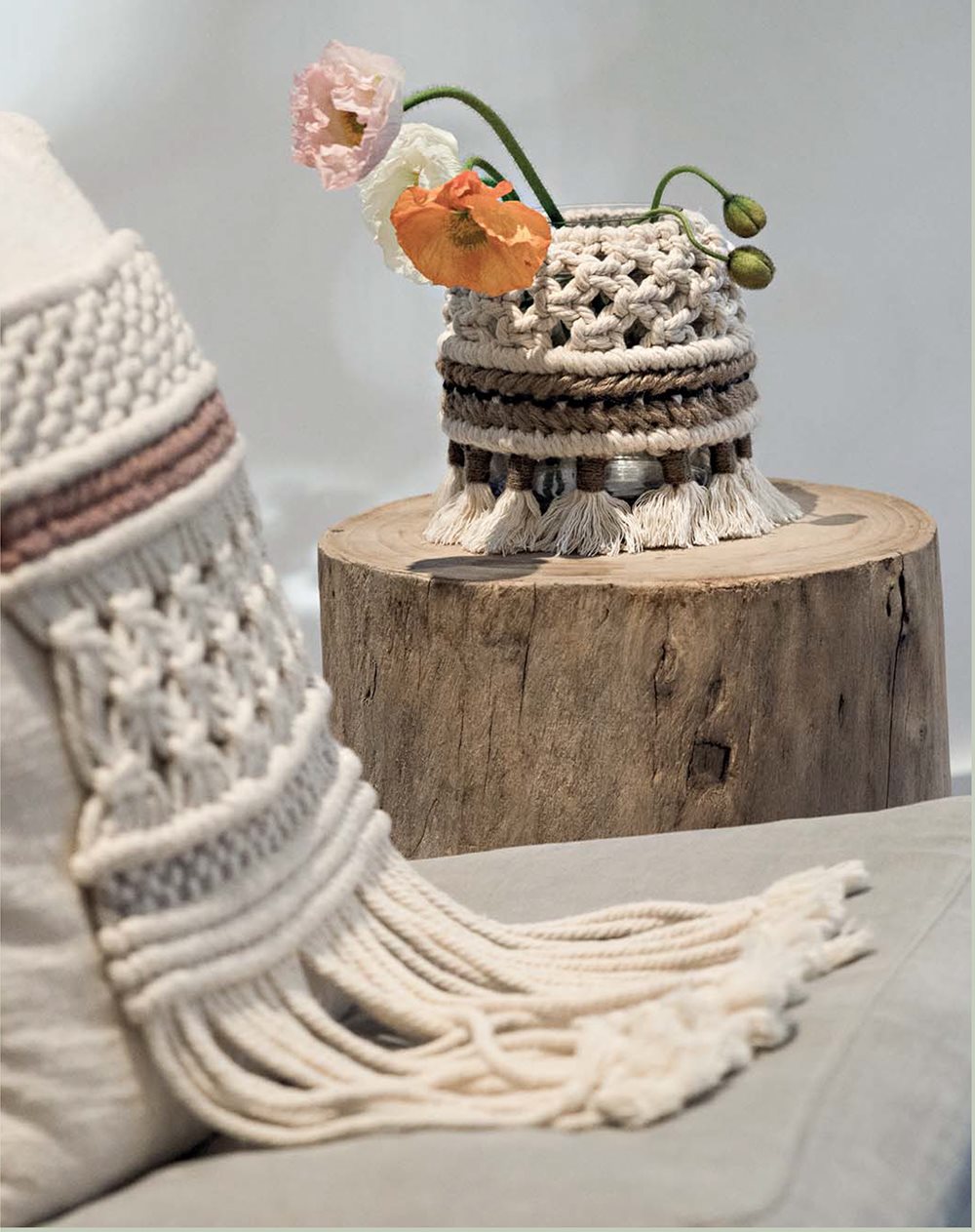
Techniques
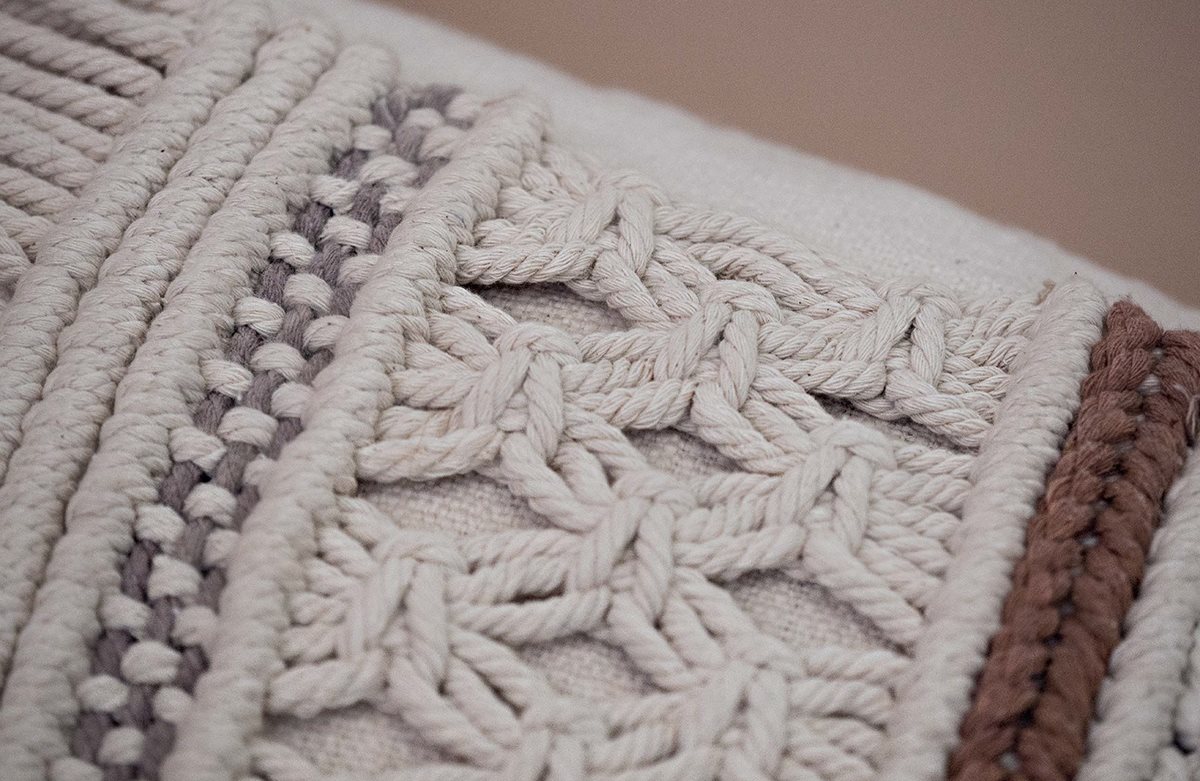
Understanding Macraweave
A macraweave is a fusion of the textile-making arts of macram and weaving, but to understand the macraweave, we must first take a look at macram and its negative spaces.
The negative spaces in a macram piece are the areas where there are no knots tied. The vertical cords of these negative spaces resemble that of the warp threads in weaving and can therefore be used in the same way.
A macraweave is made by first making a macram structure with a negative space or spaces, then applying weaving techniques through the negative space of the macram. The tension of the negative space is very important as there is no device (such as a loom) to facilitate the weave, so you must make sure that all the vertical cords in the negative space are uniformly taut before attempting to weave through them.
Once you have created a negative space (the warp) you will begin to weave in new threads horizontally using weaving techniques. These cords can be referred to as the weft and it is also important to keep a uniform tension with these cords.
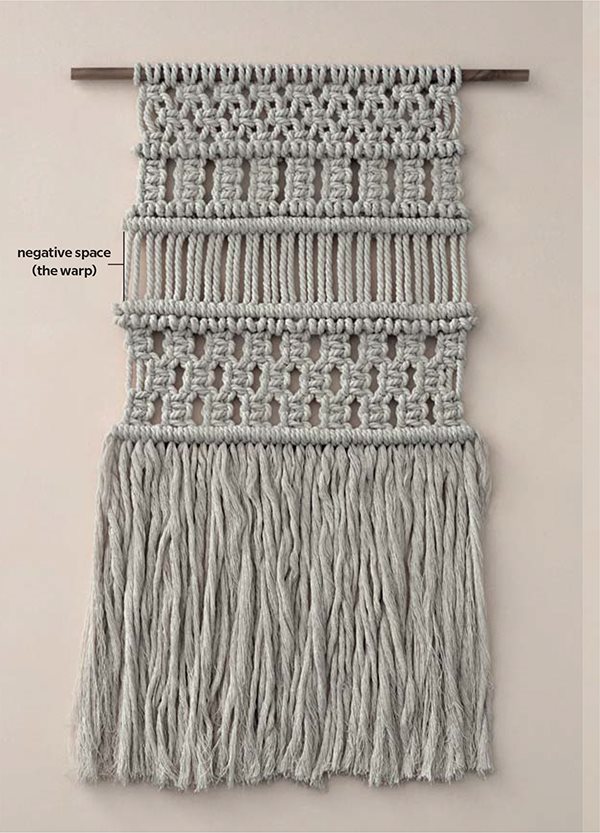
The macram structure is the first stage of creating a macraweave piece. The vertical cords where no macram knots are tied, that is the negative space, act as the warp. It is important to keep these cords uniformly taut so your weaving is neat.
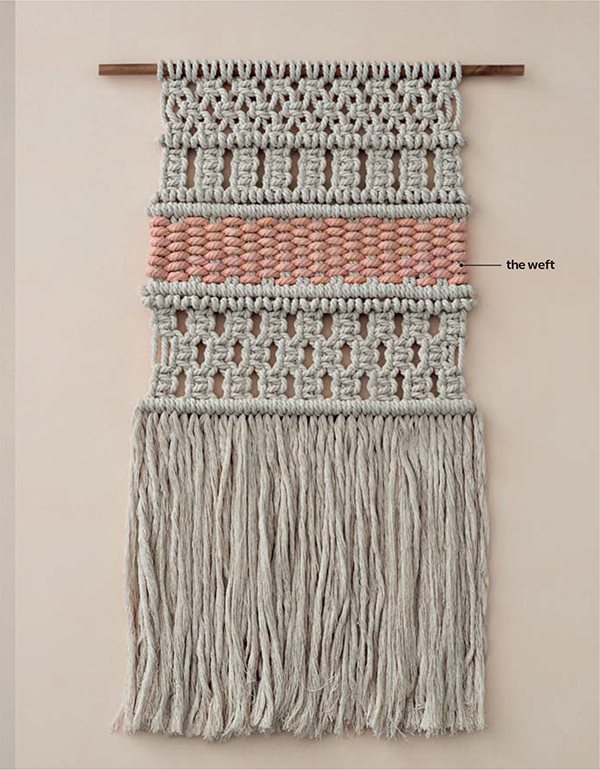
Once the macram element is complete, the weaving element can begin. Here the peach rope is the weft and it has been woven through the negative space using a simple tabby weave in a two over two under pattern.
Note: Each project features a photo or photos annotated with circled numbers that cross reference to the step-by-step instructions. However, due to the nature of creating the piece, some steps cant be shown, e.g., mounting techniques, or where macram cords have been woven over, or where rya knot fringing (Pride and Joy Wall Hanging) or project construction (shoulder bag and clutch purse) obscures steps. Take the time to read the pattern instructions carefully before you begin.
Essential Terminology
Before you start on your macraweave journey, there is some essential terminology that you need to familiarise yourself with. This list covers all of the terms used for the macram knotting and weaving techniques:
Negative space: The area where there are no knots tied in a macram piece. The negative space is used as the warp threads in a macraweave.
Warp: The vertical yarns that are held stationary and through which the weft threads are woven. In a macraweave, the warp will be comprised of pre-existing macram threads rather than the cords that are attached to the loom in traditional weaving.
Weft: The yarn or set of yarns that are worked through the weft threads in a horizontal manner.
Sinnet: A vertical column of tied knots.
Row: A series of knots tied side by side.
Working cords: The cords that are used to create the knot.
Filler cords: The nonworking cords around which the working cords are tied.
Holding cord: The object onto which cords are tied, that is a ring, a dowel or another piece of rope.
Alternate cords: The means by which you create a new knot by taking half of the cords from a previous knot together with half of the cords from its adjacent knot to form a new group.
Materials
This section gives us the opportunity to introduce you to the most important material of all for any macraweave artist, the cords for tying the knots and weaving the negative spaces, as well as a few basic tools that you will need. The exact materials used for each design are listed at the beginning of each project chapter.
For the macram structure in the projects we have used either thick cotton rope or hemp. When choosing your cotton rope, note that we have used a very soft 3-ply twisted cotton, although this can be substituted for cotton string. For the weaving element we have used a number of different fibre types, from soft yarns such as tapestry wool and cotton thread, to more textured materials including hemp, jute and sisal.
The length and thickness of the cords required for each design is given in the materials list at the start of each project. We suggest that you use the exact materials as we have for the macram structure, but when you are confident with the macraweave technique, do explore making substitutions for our choices for the weaving element. Cord is available through the authors' website www.edeneve.com.au or from all good suppliers and haberdashery stores.

